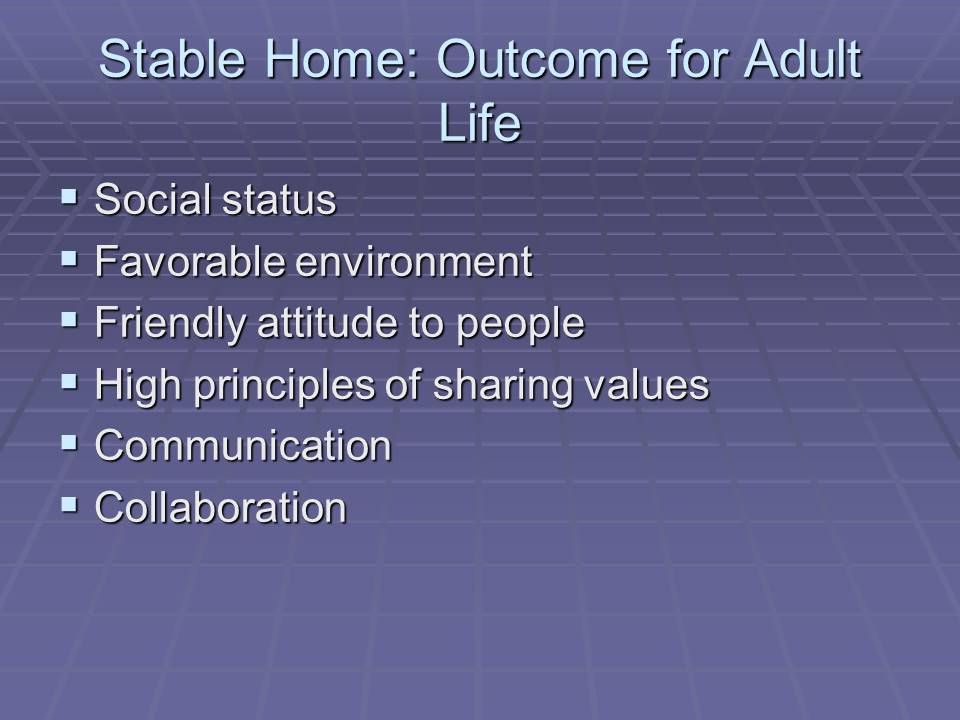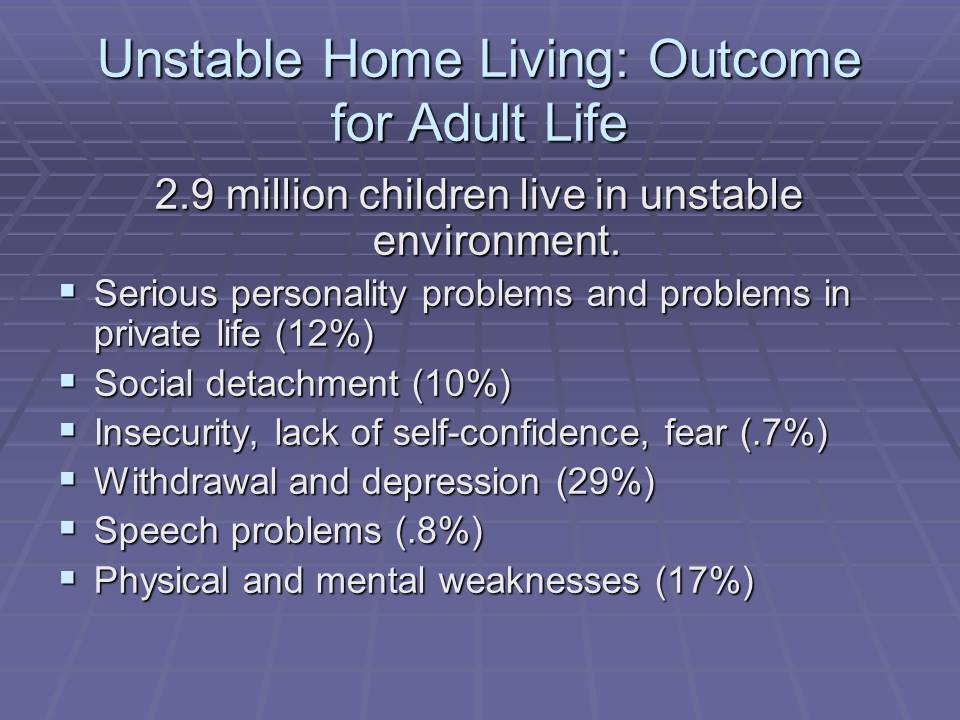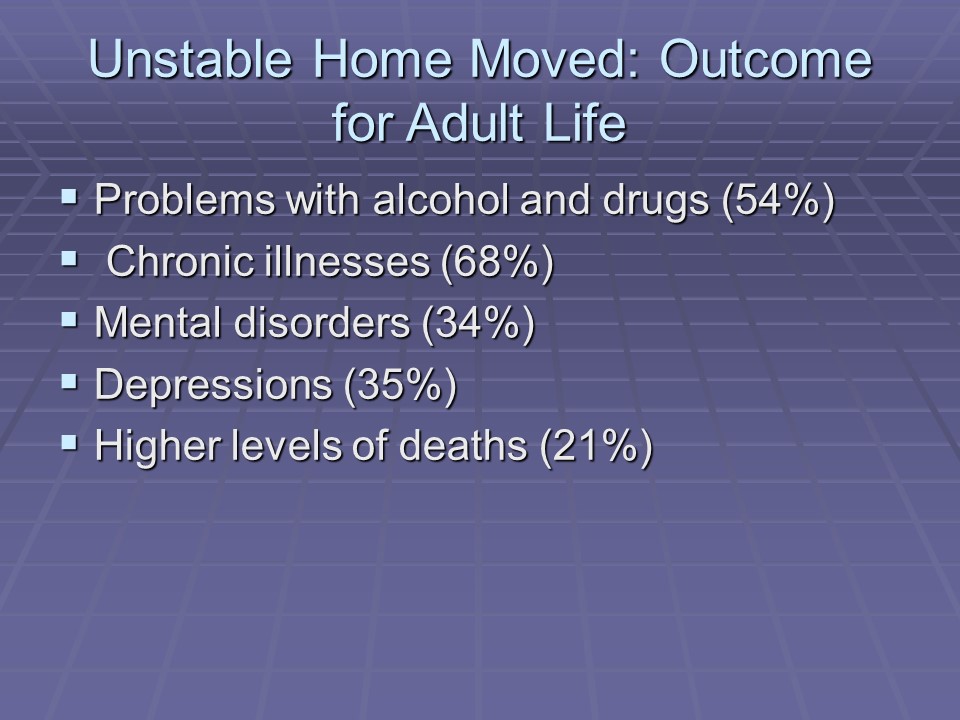Stable Home
- Social status
- Favorable environment
- Friendly attitude to people
- High principles of sharing values
- Communication
- Collaboration
Stable home favorably impacts childhood development. These children grow up sociable, they know what they want to get in their future and when they go to school they have already gained a status. Children see what happens in their families and they are eager to deliver the same calm and stable environment to their families. Moreover, children remain friendly to the environment, they can communicate effectively with other people and collaborate with other people. Therefore, it may be concluded that children who grew up in stable environment become deserving and desired members of their environment (Manalastas, 2008).

Unstable Home Moved
Living in unstable environment, people grow up unsecured, socially detached, with problems in private life and in the environment. The most important issue is that those who live in unstable families with constant quarrels believe that it is a social norm and most of them have the same unstable families in the future. 2.9 million children live in unstable environment (Hogan, 1997).
- Problems with alcohol and drugs (54%)
- Chronic illnesses (68%)
- Mental disorders (345)
- Depressions (35%)
- Higher levels of deaths (21%)
- Problems with alcohol and drugs (54%)
- Chronic illnesses (68%)
- Mental disorders (345)
- Depressions (35%)
- Higher levels of deaths (21%)
Those who have left homes suffer greatly from those who preferred to stay in unstable homes. Having become adults, those who left their houses because of unstable environment suffer greatly. They have problems with alcohol and drugs, they acquire chronic illnesses (such infections as respiratory or ear, sexually-transmitted diseases, including HIV/AIDS and gastrointestinal disorders). Such children suffer from depressions, mental disorders and other specific illnesses which lead to higher rates of death. Such people cannot become sterling members of the society (Street Children and Homelessness, 2004). Statistical data is considered in Hogan (1997).
Hypothesis
Children who live in stable environment get more chances to have happy and successful future while those who live in unstable environment. However, those who stay at homes (living in unstable environment) are eager to remain more successful than those who move from their homes.


Reference List
Hogan, R. (1997). Handbookofpersonalitypsychology. New York: Gulf Professional Publishing.
Manalastas, R. (2008). Why a stable home life is important for children. Helium. Web.
Street Children and Homelessness. (2004). CYC-Online 68. Web.